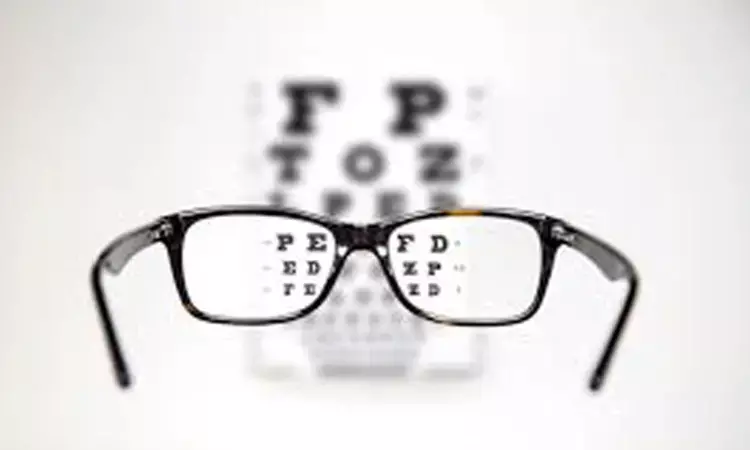- Home
- Medical news & Guidelines
- Anesthesiology
- Cardiology and CTVS
- Critical Care
- Dentistry
- Dermatology
- Diabetes and Endocrinology
- ENT
- Gastroenterology
- Medicine
- Nephrology
- Neurology
- Obstretics-Gynaecology
- Oncology
- Ophthalmology
- Orthopaedics
- Pediatrics-Neonatology
- Psychiatry
- Pulmonology
- Radiology
- Surgery
- Urology
- Laboratory Medicine
- Diet
- Nursing
- Paramedical
- Physiotherapy
- Health news
- Fact Check
- Bone Health Fact Check
- Brain Health Fact Check
- Cancer Related Fact Check
- Child Care Fact Check
- Dental and oral health fact check
- Diabetes and metabolic health fact check
- Diet and Nutrition Fact Check
- Eye and ENT Care Fact Check
- Fitness fact check
- Gut health fact check
- Heart health fact check
- Kidney health fact check
- Medical education fact check
- Men's health fact check
- Respiratory fact check
- Skin and hair care fact check
- Vaccine and Immunization fact check
- Women's health fact check
- AYUSH
- State News
- Andaman and Nicobar Islands
- Andhra Pradesh
- Arunachal Pradesh
- Assam
- Bihar
- Chandigarh
- Chattisgarh
- Dadra and Nagar Haveli
- Daman and Diu
- Delhi
- Goa
- Gujarat
- Haryana
- Himachal Pradesh
- Jammu & Kashmir
- Jharkhand
- Karnataka
- Kerala
- Ladakh
- Lakshadweep
- Madhya Pradesh
- Maharashtra
- Manipur
- Meghalaya
- Mizoram
- Nagaland
- Odisha
- Puducherry
- Punjab
- Rajasthan
- Sikkim
- Tamil Nadu
- Telangana
- Tripura
- Uttar Pradesh
- Uttrakhand
- West Bengal
- Medical Education
- Industry
Photorefractive Keratectomy safe and effective procedure for enhancement of SMILE: Study

Small-incision lenticule extraction (SMILE) is a refractive procedure approved by the United States Food and Drug Administration (FDA) for the correction of myopia and myopic astigmatism. The procedure is performed using the VisuMax Laser System and uses a femtosecond laser to incise and carve a lenticule within the corneal stroma without creating a corneal flap. The lenticule is then excised from the cornea to achieve refractive correction.
As with other refractive surgeries, a subset of SMILE patients requires follow-up enhancement. Enhancement may be required due to a delayed myopic regression or an initial under- or overcorrection. In these cases, the most common enhancement procedures are photorefractive keratectomy (PRK) and LASIK.
This retrospective, single-site study by Moshirfar et al reviewed all cases of primary SMILE at Hoopes Vision in Draper, Utah between March 14, 2017 and April 8, 2022 to identify any cases that required follow-up enhancement. Primary SMILE was performed using Visumax 500 kHz femtosecond laser (Carl Zeiss Meditec, Jena, Germany). All enhancements were performed with alcohol assisted PRK, using a WaveLight EX500 excimer laser (Alcon Laboratories, Inc., Fort Worth, TX).
Four hundred and five eyes underwent primary SMILE, of which 15 later underwent PRK enhancement (enhancement rate of 3.7%). No significant difference in pre-SMILE data was identified between the enhancement and non-enhancement groups.
Following primary SMILE, 13 eyes (87%) had an uncorrected distance visual acuity (UDVA) of 20/40 or better, and none had a UDVA of 20/20 or better.
After one year of post-enhancement follow-up, all eyes had a UDVA of 20/40 or better, and 13 eyes (87%) had a UDVA of 20/20 or better.
All were within one diopter of target spherical equivalent (SEQ), 13 (87%) were within 0.50 D, and 10 (67%) were within 0.25 D.
Of those with 12-month follow-up data, none had UDVA worse than corrected distance visual acuity (CDVA), and none had lost lines of CDVA. Efficacy and safety indices were 1.03 and 0.99, respectively.
This study retrospectively reviewed 15 cases of PRK enhancement following SMILE. The rate of enhancement was 3.7%. Though limited by the small sample size and retrospective nature of the study, this result fits within the range reported in the literature, which suggests that ophthalmologists may anticipate an enhancement rate of one to seven percent following SMILE. In these cases, PRK is a safe and effective procedure for enhancement of SMILE.
Source: Moshirfar et al; Clinical Ophthalmology 2022:16https://doi.org/10.2147/OPTH.S381319
Dr Ishan Kataria has done his MBBS from Medical College Bijapur and MS in Ophthalmology from Dr Vasant Rao Pawar Medical College, Nasik. Post completing MD, he pursuid Anterior Segment Fellowship from Sankara Eye Hospital and worked as a competent phaco and anterior segment consultant surgeon in a trust hospital in Bathinda for 2 years.He is currently pursuing Fellowship in Vitreo-Retina at Dr Sohan Singh Eye hospital Amritsar and is actively involved in various research activities under the guidance of the faculty.
Dr Kamal Kant Kohli-MBBS, DTCD- a chest specialist with more than 30 years of practice and a flair for writing clinical articles, Dr Kamal Kant Kohli joined Medical Dialogues as a Chief Editor of Medical News. Besides writing articles, as an editor, he proofreads and verifies all the medical content published on Medical Dialogues including those coming from journals, studies,medical conferences,guidelines etc. Email: drkohli@medicaldialogues.in. Contact no. 011-43720751


